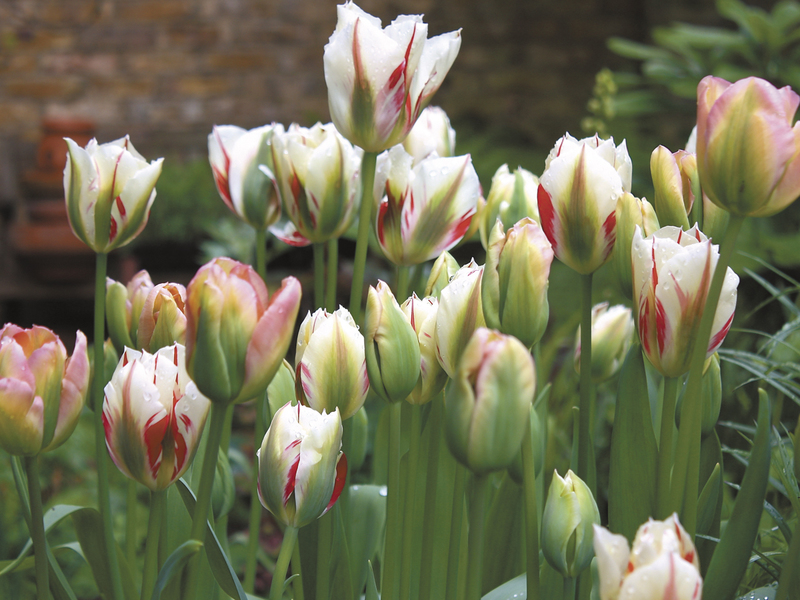Few things are all bad, nor all good. A virus can kill, but the cowpox virus can give us immunity from smallpox. When tulip mania swept the Netherlands, the more exotic and colorful the tulip, often the higher the price. Some of the most interesting tulips were not solid colors, but tulips with streaks of contrasting colors, often flames of red across yellow or purple splashes on white, or just about any imaginable color variations.
These tulips are said to have broken colors, and those colorful streaks are caused not by DNA, but by a virus. Rather than introduce virus-ridden bulbs into your garden, breeders have re-created the streaks and swirls of the broken colors with Rembrandt tulips. This is an odd name, as Rembrandt rarely painted tulips.
Most Rembrandt tulips are late-flowering single tulips, often called “May-flowering tulips” because they bloom in May. This makes them especially nice to grow to extend the tulip season into late spring. With strong stems up to 30 inches tall, May-flowering tulips make excellent cut flowers. Many are surprisingly fragrant.
As with all tulips, the bulbs are planted in autumn so they can go through a necessary chilling before blooming in the spring. Ideal soil temperature is below 60 degrees, which is usually six to eight weeks before a hard frost. If you cannot plant your bulbs right away, store them in a dark, cool place out of direct light.
Choose a well-drained spot; wet, soggy ground will cause the bulbs to rot. Full sun or light shade is best. Many gardeners have luck planting tulips under deciduous trees that don’t leaf out until after the tulips have bloomed.
Rembrandt tulips are available wherever bulbs are sold or by mail from suppliers such as Burpee (www.Burpee.com) and Fedco Seeds (www.FedcoSeeds.com, telephone 207-426-0090, or by mail at Fedco, PO Box 520, Waterville ME 04903).
Tulips do best with a soil pH of 7.0. If your soil is heavy clay or light sand, add generous amounts of compost or peat moss along with a good, slow-release fertilizer. Bone meal has been the traditional food for bulbs because it is high in phosphorous. The nitrogen-phosphorus-potassium ratio (often abbreviated to NPK) of bone meal is usually 4-12-0, with the more common steamed bone meal NPK of 1-13-0. As such it contains no nitrogen which must come from other sources such as cottonseed meal. There are many organic fertilizers specifically made for bulbs that provide complete nutrition.
Always plant Rembrandt tulip bulbs with the pointed end up. Plant each bulb deep enough so that it is covered by three to four inches of soil. More shallow plantings will expose the bulbs to hard freezes or drying sun. Deeper planting may stress the bulb as it tries to break through the surface of the garden.
Space each bulb a good four to six inches from its neighbor so the roots have room to grow and spread out. Tamp down the soil to close any air pockets and water thoroughly after planting.
Come next spring, rake away any mulch or debris, and water during dry spells. By May your Rembrandt tulips will burst into bloom with crazy streaks of color and vibrant blossoms. After bloom cut the spent flowers off and let the foliage die naturally.
Your bit of history may just come back for a few more years, healthy tulips inspired by a virus.























































